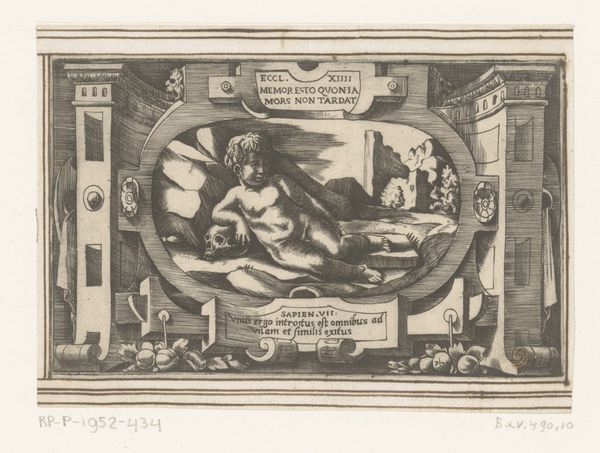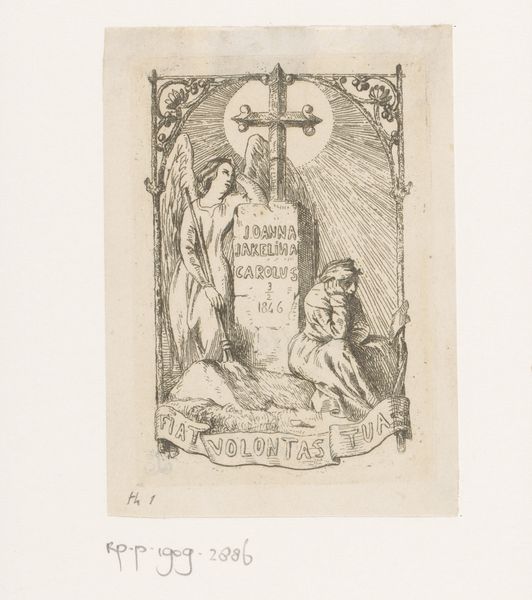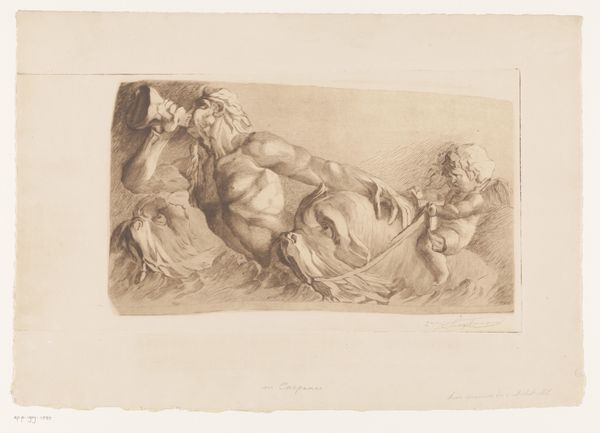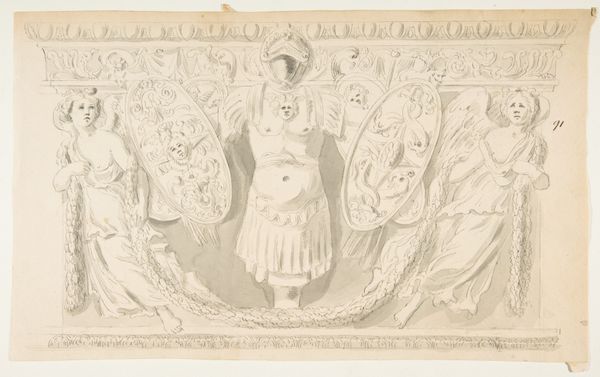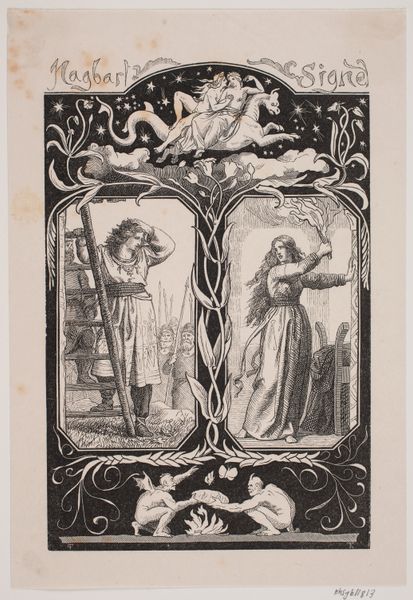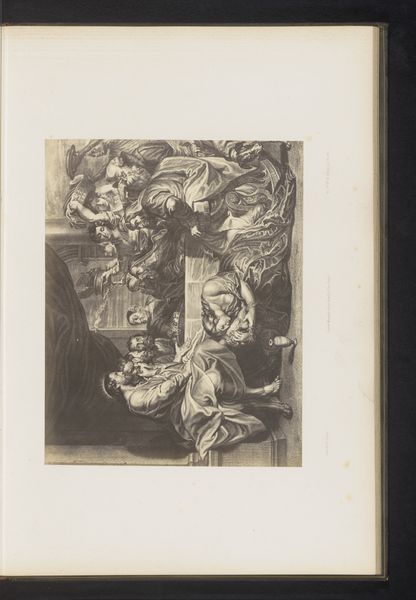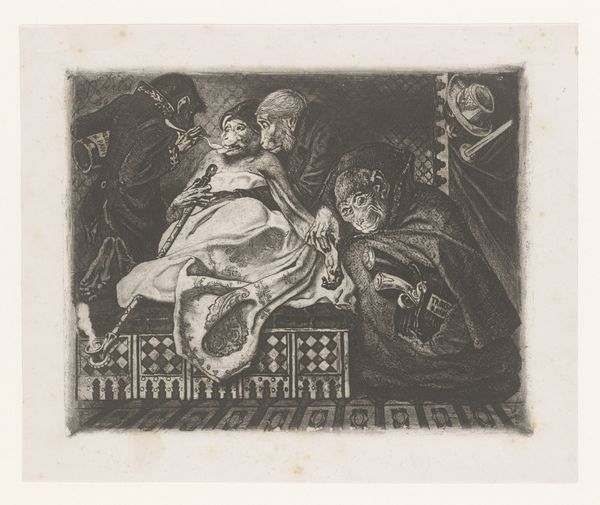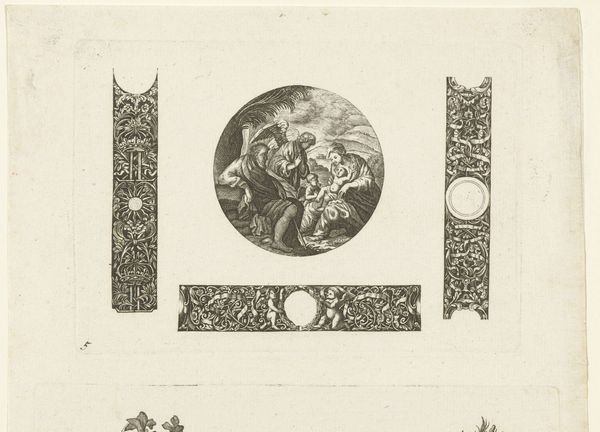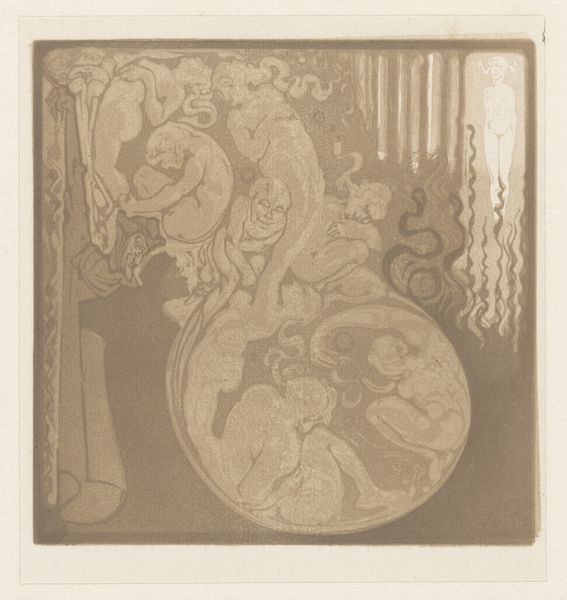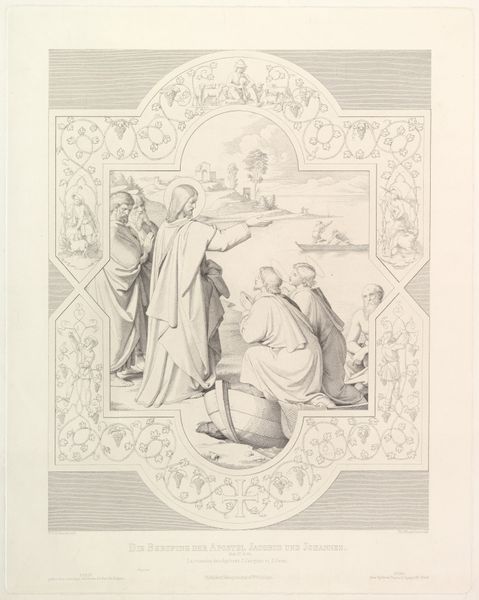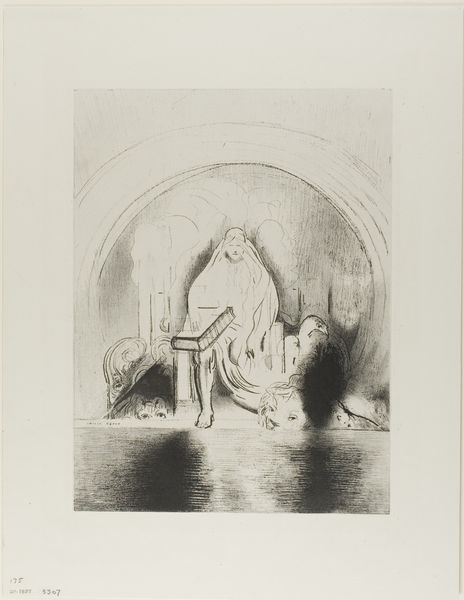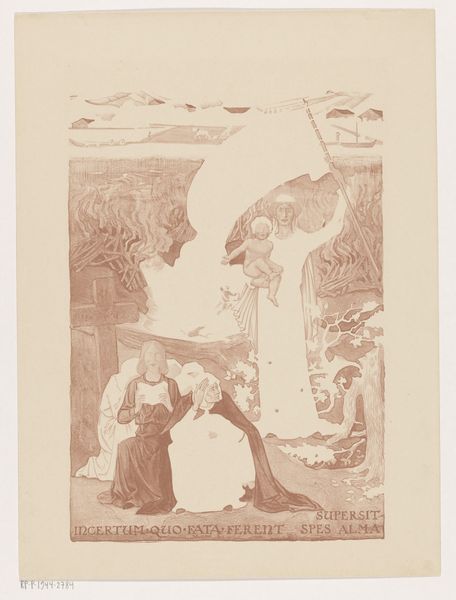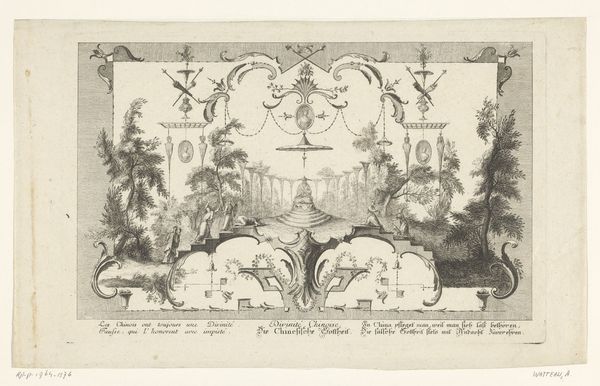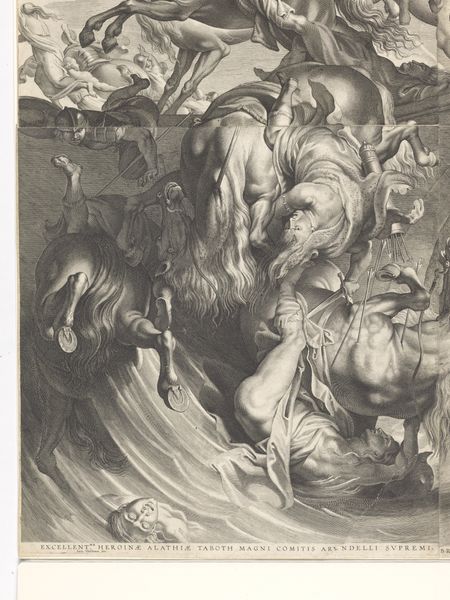
Omslag voor Wendingen met een non met bloemen en twee geesten, waarvan één met een masker in zijn hand 1919
0:00
0:00
drawing, paper, ink
#
portrait
#
drawing
#
art-nouveau
#
pen drawing
#
figuration
#
paper
#
ink
#
symbolism
Dimensions: height 360 mm, width 678 mm
Copyright: Rijks Museum: Open Domain
Curator: This drawing by Jan Toorop, from 1919, serves as the cover for the Dutch art journal "Wendingen". It depicts a nun with flowers, accompanied by two spiritual figures, one masked, all rendered in ink on paper. The Rijksmuseum is fortunate to hold this work in its collection. Editor: It has an immediate feeling of restraint mixed with unease. The somber palette combined with the symbolic imagery certainly conveys a powerful, though somewhat obscure, message. The juxtaposition of the sacred nun and those ghostly figures… it hints at underlying tension, wouldn't you agree? Curator: I think that tension is precisely what Toorop aimed for. "Wendingen", meaning "turning points", sought to explore radical ideas. This image can be read within the context of post-World War I disillusionment. The nun, holding flowers, might symbolize hope, or perhaps, the fading idealism of a generation seeking solace in religion. The masked figure represents hidden truths and the societal facades that Toorop saw as masking deep wounds in the socio-political fabric. Editor: That’s an intriguing interpretation. So the masked figure becomes a critique of societal structures, masking true intentions, perhaps? I wonder, does Toorop challenge the idealized image of religious devotion here, linking it perhaps to the constraints imposed on women at the time, represented by the habit, next to themes of hidden identities and societal deception? Curator: That resonates well with his other Symbolist works that engage similar anxieties, and those constraints often disproportionately affected women. Editor: And doesn’t the choice to render it in ink and with such graphic clarity—the contrasting sections of light and dark– almost mimic woodcut print techniques of the time? That, in itself, points towards a specific art historical context, perhaps reflecting on Germany’s role in shaping modernist ideals during the war. It shows art engaging actively in discussions on war, identity, gender, and institutional reform. Curator: Indeed. It’s fascinating to see how Toorop blends religious symbolism, critiques of gender and class inequalities and stylistic experimentation to reflect a society at a critical juncture. Editor: This image makes you think about the cyclical nature of such challenges and what "turning points" truly mean in different times and circumstances. Curator: A poignant point; "Wendingen" indeed, and ones we're still grappling with today.
Comments
No comments
Be the first to comment and join the conversation on the ultimate creative platform.

